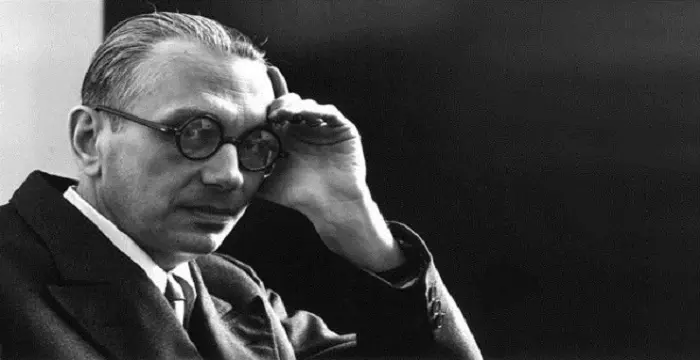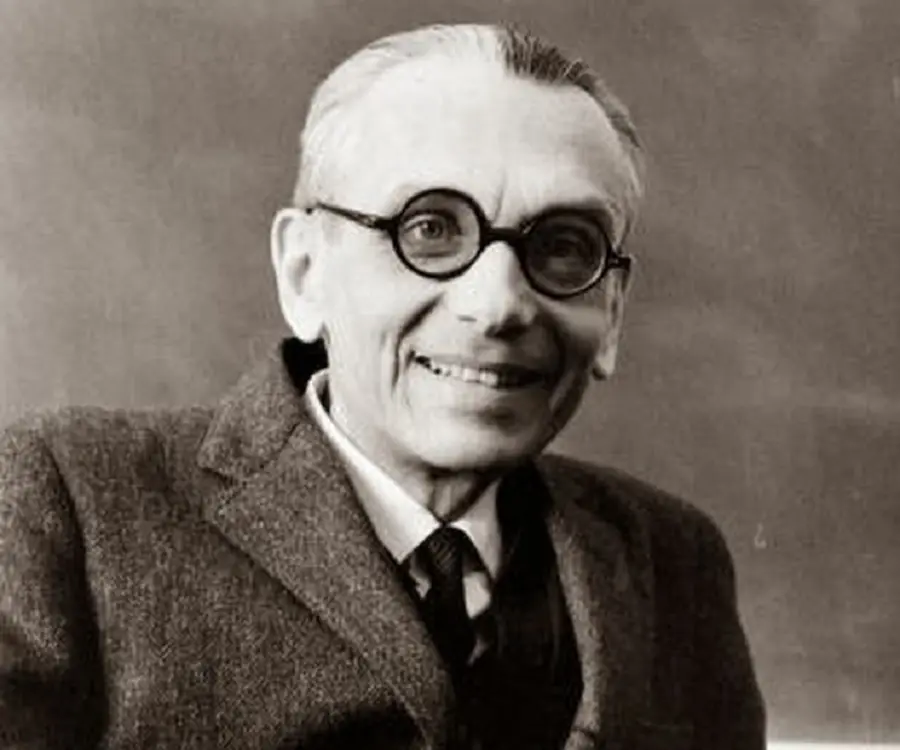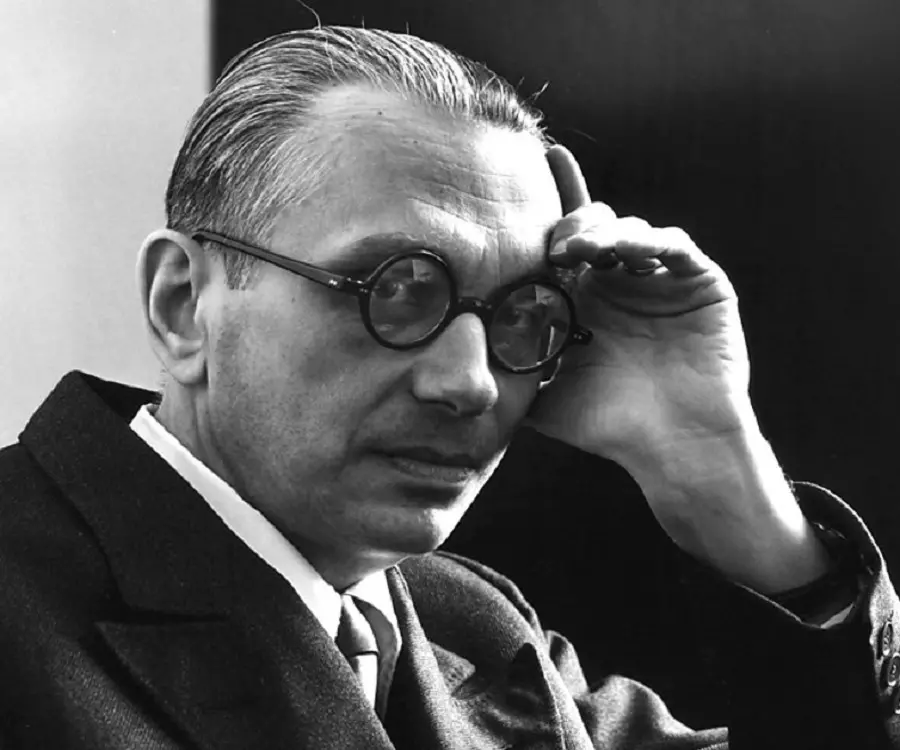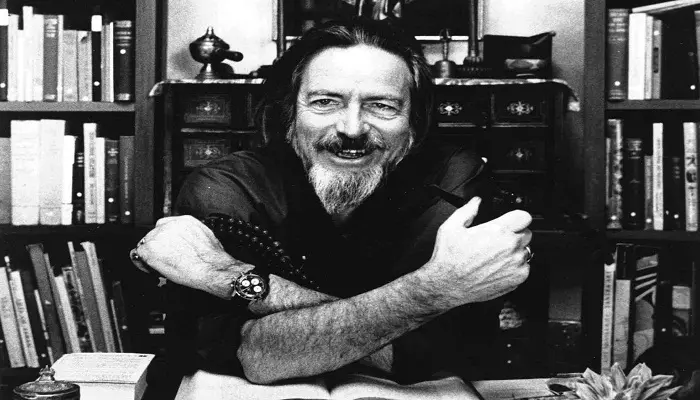
Kurt Gödel - Mathematicians, Family and Family
Kurt Gödel's Personal Details
Kurt Gödel was a well-known mathematician and philosopher
| Information | Detail |
|---|---|
| Birthday | April 28, 1906 |
| Died on | January 14, 1978 |
| Nationality | American |
| Famous | Intellectuals & Academics, Philosophers, Mathematicians |
| Spouses | Adele Nimbursky |
| Siblings | Rudolf |
| Universities |
|
| Birth Place | Brno |
| Gender | Male |
| Father | Rudolf Gödel |
| Mother | Marianne Gödel |
| Sun Sign | Taurus |
| Born in | Brno |
| Famous as | Mathematician, Philosopher |
| Died at Age | 71 |
// Famous Mathematicians
Grigori Perelman
Grigori Perelman is a Russian mathematician who is best known for his contributions to Riemannian geometry and geometric topology. Check out this biography to know about his childhood, family life, achievements and fun facts about him.
Terence Tao
Terence Tao is an Australian- American mathematician who has contributed enormously to the field of mathematics. Check out this biography to know about his childhood, family life and achievements.
Isaac Newton
Isaac Newton was an English scientist and mathematician, who discovered gravitation and Newtonian Mechanics. Read this biography to find more on his life.
Kurt Gödel's photo
Who is Kurt Gödel?
Kurt Friedrich Gödel was an Austrian-American logician, mathematician, and philosopher, born in the Austro-Hungarian city of Brno. He was a bright and inquisitive child, who had interest in various subjects. Although he entered the University of Vienna with physics, he continued attending mathematics and philosophy classes and subsequently took up mathematics as his main subject. Soon after earning his doctorate degree at the age of twenty-five, he published two incompleteness theorems. Thereafter, he began working at the University of Vienna as Privatdozent. Concurrently, he also became a visiting professor at the Institute of Advanced Study at Princeton, USA. When Germany annexed Austria, he moved to the USA, where he spent his entire career at IAS, Princeton. Although he was basically a mathematician, later his interest shifted towards philosophy and he continued working on these two subjects. Unfortunately, towards the end of life, he developed Persecutory delusions and fearing being poisoned, he starved himself to death.
// Famous Intellectuals & Academics
Bertil Gotthard Ohlin
Bertil Gotthard Ohlin was a famous Swedish economist. This biography profiles his childhood, family life & achievements.
Emily Greene Balch
Emily Greene Balch was an American economist, sociologist and pacifist who won the 1946 Nobel Peace Prize. This biography of Emily Greene Balch provides detailed information about her childhood, life, achievements, works & timeline.
Martin Buber
One of the greatest philosophers to have ever walked on earth, Martin Buber contributions to philosophy is a long-standing one. Explore all about his profile, childhood, life and timeline here.
Childhood & Early Life
Kurt Friedrich Gödel was born on April 28, 1906, in Brno, the second largest city in the Czech Republic. At the time of his birth, it was a textile-producing city in the Austro-Hungarian province of Moravia and was known as Brünn.
His father, Rudolf Gödel, was initially a textile worker. Later, he became the manager and eventually the part owner of the Friedrich Redlich textile factory. His mother, Marianne Gödel (née Handschuh) was educated at a French institute; she had broad cultural interests.
Kurt was the younger of his parents’ two children. His elder brother, also named Rudolf, later became a radiologist in Vienna. Although his father was Catholic, he was baptized in his mother’s religion, a Lutheran and derived his middle name from his godfather Friedrich Redlich.
He had a very happy childhood. He was vey devoted to his mother and felt helpless when she was not around. He was also very inquisitive and kept on asking questions. Because of that, his family called him Herr Warum or Mr. Why.
However, from his childhood, he suffered from different ailments. At the age of five, he had a mild anxiety neurosis, but recovered completely from it. At six, he suffered from rheumatic fever. Although he recovered from this too, he became convinced that his heart had been damaged permanently.
In 1912, Kurt started his education at Evangelische Privat-Volks-und Bürgerschule, a Lutheran primary school in Brünn. In spite of his bad health he was a brilliant student and graduated from there in 1916.
Thereafter, he entered Staats-Realgymnasium, a German speaking high school in Brünn. Here too he excelled academically and became fascinated first with foreign languages and then with history.
In 1918, with the breakup of Austro-Hungarian Empire, Gödel automatically became a Czechoslovak citizen. Young though he was, he could not accept that and considered himself an Austrian.
Sometime in 1920, he developed an interest in mathematics and by the next year, in philosophy. By 1922, he had read Kant and soon started working on university level mathematics. By the time he graduated in 1924, he had mastered a good deal of it.
Studying in Vienna
However, when Kurt Gödel joined the University of Vienna in 1924, he took up theoretical physics as his major. Sometime before this, he had read Goethe’s theory of colors and became interest in the subject. At the same time, he attended classes on mathematics and philosophy as well.
Soon he came in contact with great mathematicians and in 1926, influenced by number theorist Philipp Furtwängler, he decided to change his subject and take up mathematics. Besides that, he was highly influenced by Karl Menger’s course in dimension theory and attended Heinrich Gomperz’s course in the history of philosophy.
Also in 1926, he entered the Vienna Circle, a group of positivist philosophers formed around Moritz Schlick, and until 1928, attended their meetings regularly. After graduation, he started working for his doctoral degree under Hans Hahn. His dissertation was on the problem of completeness.
In the summer of 1929, Gödel submitted his dissertation, titled ‘Über die Vollständigkeit des Logikkalküls’ (On the Completeness of the Calculus of Logic). Subsequently in February 1930, he received his doctorate in mathematics from the University of Vienna. Sometime now, he also became an Austrian citizen.
Later in the same year, he published his dissertation in a slightly abridged form. The work established that all of the first-order logical truths can be proved in standard first-order proof systems. Thereafter, working further on the subject, he published his second paper on the same topic in January 1931.
Titled, ‘Über formal unentscheidbare Sätze der Principia Mathematica und verwandter Systeme I’ (On Formally Undecidable Propositions of Principia Mathematica and Related Systems I), the paper had a number of theorems that would have great implications for consistency proofs in mathematics. It also contained many techniques, which would help to prove these theorems.
Later, Kurt Gödel submitted the paper for his habilitation and spent the academic years of 1931 and 1932 working as an assistant to his doctoral guide Hans Hahn. Finally his habilitation was accepted on 1 December 1932 and in March 1933, Kurt Gödel became a Privatdozent at the University of Vienna.
Working in Vienna
As a Privatdozent, Kurt Gödel gave his first course on the foundations of arithmetic. He was an extremely shy person and gave his lectures facing the blackboard. During the seven years he spent at the university, he taught only two more courses.
Also in 1933, he was appointed a visiting professor at the Institute for Advanced Study, Princeton, U.S.A. Accordingly, from February to May 1934, he gave a series of lectures titled ‘On undecidable propositions of formal mathematical systems’ at the IAS.
These lectures were noted down by young Stephen Cole Kleene, an American mathematician and later published in book form. Sometime now, Gödel also met Albert Einstein and established a life-long friendship.
In the mid-1930s, his mental health deteriorated and he suffered a nervous breakdown. Thereafter, he spent several months in a sanatorium receiving treatment for depression.
His bout of depression reappeared when in June 1936, German philosopher Moritz Schlick was murdered by a deranged student. Gödel again had to undergo treatment. Thus he could not return to his academic life until 1937.
On March 12, 1938, Germany annexed Austria. They abolished the position of Privatdozent and so Gödel had to apply afresh. All along, he had been close to several Jewish scholars and this went against him. He was not only turned down for an academic post but also found physically fit for conscription into the Nazi army.
Migration to U.S.A
When in 1939 the Second World War broke out, Kurt Gödel decided to leave for the U.S.A. Thanks to his friends in the U.S.A., he received a non-quota immigrant visa and also a Soviet transit visa by January 1940.
He then took the Trans Siberian Railway to reach Yokohama and from there sailed through the Pacific Ocean to reach San Francisco on March 4, 1940. Finally, he took a train to Princeton, where he was appointed an ordinary member of the Institute of Advanced Study.
Since he did not have any formal duty at the IAS, he spent his time working on his mathematical research. In the same year, he published ‘Consistency of the Axiom of Choice and of the Generalized Continuum-Hypothesis with the Axioms of Set Theory’.
He spent the summer of 1942 working on the independence of the axiom of choice from finite type theory and possibly discovered a proof. Although he never published the work, scholars were able to deduce that after examining his notebooks relating to that period.
From Mathematics to Philosophy
From 1942 onwards, he turned his attention away from mathematics and began to work first on philosophy of mathematics and then on philosophy in general. From 1943 to 1946, he concentrated mainly on Gottfried Leibniz but also studied Immanuel Kant and Edmund Husserl.
Meanwhile in 1944, he published his first philosophical paper, titled ‘On Russell's Mathematical Logic.’ During this period, he also had a quiet social life and spent a lot of time with Albert Einstein discussing everything from politics to philosophy and physics. Later he also became friendly with Morgenstern.
In 1946, Gödel was made a permanent member of the IAS. In 1947, he published his second paper on philosophy, titled ‘What is Cantor's Continuum Hypothesis?’ Sometime now, he also studied the U.S. Constitution and discovered an inconsistency, which could allow the United States to become a dictatorship.
Therefore, when on December 5, 1947, he was asked to appear for his U.S. citizenship examination, Einstein and Morgenstern accompanied him. They were afraid, that Gödel might say something that would jeopardize his chances.
However, everything went on smoothly and Gödel became a US citizen. He then continued working on philosophy and in 1949 published his paper on the subject, ‘A Remark on the Relationship between Relativity Theory and Idealistic Philosophy.’
In 1953, Gödel became a full professor at the Institute. By that time, his involvement in philosophy had deepened. From then on until 1959, he worked on a submission to the Schilpp volume on Rudolf Carnap. Titled ‘Is Mathematics a Syntax of Language?’ It for some reason was never published.
Gödel remained with the Institute until his retirement in 1976. Thereafter he remained attached to it as an emeritus professor. In his later years, although he worked consistently, he did not publish any paper. However, he circulated many of them in manuscript form.
’Some considerations leading to the probable conclusion that the true power of the continuum is ℵ2’ and ‘Ontologischer Beweis’, both circulated in 1970, are some such works. Together they give expression to his core ideas, resulting from his long involvement with mathematics and philosophy.
Major Works
Gödel is best remembered for his two incompleteness theorems, published in 1931. While working on mathematical logic, he discovered that there were some inherent limitations in every formal axiomatic system containing basic arithmetic. Later these theorems were found to be as much important for mathematical logic as for the philosophy of mathematics.
Awards & Achievements
In 1951, Gödel was awarded the first Albert Einstein Award jointly with Julian Schwinger.
In 1968, he was elected a Foreign Member of the Royal Society.
In 1974, he was awarded the National Medal of Science.
Personal Life & Legacy
In 1927, Kurt Gödel met Adele Nimbursky (née Porkert) at a night club, where she was employed as a dancer. She was six years older to him and a divorcee. Although his family did not approve of the match, he married her on September 20, 1938, just before they left for the U.S.A.
Late in life he began to suffer from Persecutory delusions and feared of being poisoned. He did not take any food unless his wife prepared it.
Unfortunately, late in 1977, Adele was hospitalized for six months. During that period Gödel refused to eat. As the situation became alarming, he was admitted to Princeton Hospital, where he died on January 14, 1978. His death certificate stated that he died of "malnutrition and inanition caused by personality disturbance".
Concepts like Gödel metric, Gödel numbering, and Gödel's ontological proof bear his legacy.
The Kurt Gödel Society, an international organization founded in 1987 for the promotion of research in logic, philosophy, and the history of mathematics, was named in his honor.
// Famous Philosophers
Martin Buber
One of the greatest philosophers to have ever walked on earth, Martin Buber contributions to philosophy is a long-standing one. Explore all about his profile, childhood, life and timeline here.
Lao Tzu (Laozi)
Lao Tzu was a legendary Chinese philosopher who wrote the important “Daodejing”. This biography profiles his childhood, life, career, achievements and timeline.
Alan Watts
Alan Watts was a famous British philosopher known for his Zen teachings and interpretations of Eastern philosophy. Read more about this great philosopher in the following article.
Kurt Gödel's awards
| Year | Name | Award |
|---|---|---|
Other | ||
| 0 | Albert Einstein Award (1951); National Medal of Science (USA) in Mathematical | |
| 0 | Statistical | |
| 0 | and Computational Sciences (1974) | |
Kurt Gödel biography timelines
- // 28th Apr 1906Kurt Friedrich Gödel was born on April 28, 1906, in Brno, the second largest city in the Czech Republic. At the time of his birth, it was a textile-producing city in the Austro-Hungarian province of Moravia and was known as Brünn.
- // 1912 To 1916In 1912, Kurt started his education at Evangelische Privat-Volks-und Bürgerschule, a Lutheran primary school in Brünn. In spite of his bad health he was a brilliant student and graduated from there in 1916.
- // 1918In 1918, with the breakup of Austro-Hungarian Empire, Gödel automatically became a Czechoslovak citizen. Young though he was, he could not accept that and considered himself an Austrian.
- // 1920 To 1924Sometime in 1920, he developed an interest in mathematics and by the next year, in philosophy. By 1922, he had read Kant and soon started working on university level mathematics. By the time he graduated in 1924, he had mastered a good deal of it.
- // 1924However, when Kurt Gödel joined the University of Vienna in 1924, he took up theoretical physics as his major. Sometime before this, he had read Goethe’s theory of colors and became interest in the subject. At the same time, he attended classes on mathematics and philosophy as well.
- // 1926Also in 1926, he entered the Vienna Circle, a group of positivist philosophers formed around Moritz Schlick, and until 1928, attended their meetings regularly. After graduation, he started working for his doctoral degree under Hans Hahn. His dissertation was on the problem of completeness.
- // 1927In 1927, Kurt Gödel met Adele Nimbursky (née Porkert) at a night club, where she was employed as a dancer. She was six years older to him and a divorcee. Although his family did not approve of the match, he married her on September 20, 1938, just before they left for the U.S.A.
- // 1929In the summer of 1929, Gödel submitted his dissertation, titled ‘Über die Vollständigkeit des Logikkalküls’ (On the Completeness of the Calculus of Logic). Subsequently in February 1930, he received his doctorate in mathematics from the University of Vienna. Sometime now, he also became an Austrian citizen.
- // 1931Later, Kurt Gödel submitted the paper for his habilitation and spent the academic years of 1931 and 1932 working as an assistant to his doctoral guide Hans Hahn. Finally his habilitation was accepted on 1 December 1932 and in March 1933, Kurt Gödel became a Privatdozent at the University of Vienna.
- // 1933Also in 1933, he was appointed a visiting professor at the Institute for Advanced Study, Princeton, U.S.A. Accordingly, from February to May 1934, he gave a series of lectures titled ‘On undecidable propositions of formal mathematical systems’ at the IAS.
- // 1936 To 1937His bout of depression reappeared when in June 1936, German philosopher Moritz Schlick was murdered by a deranged student. Gödel again had to undergo treatment. Thus he could not return to his academic life until 1937.
- // 12th Mar 1938On March 12, 1938, Germany annexed Austria. They abolished the position of Privatdozent and so Gödel had to apply afresh. All along, he had been close to several Jewish scholars and this went against him. He was not only turned down for an academic post but also found physically fit for conscription into the Nazi army.
- // 1939 To 1940When in 1939 the Second World War broke out, Kurt Gödel decided to leave for the U.S.A. Thanks to his friends in the U.S.A., he received a non-quota immigrant visa and also a Soviet transit visa by January 1940.
- // 4th Mar 1940He then took the Trans Siberian Railway to reach Yokohama and from there sailed through the Pacific Ocean to reach San Francisco on March 4, 1940. Finally, he took a train to Princeton, where he was appointed an ordinary member of the Institute of Advanced Study.
- // 1942He spent the summer of 1942 working on the independence of the axiom of choice from finite type theory and possibly discovered a proof. Although he never published the work, scholars were able to deduce that after examining his notebooks relating to that period.
- // 1944Meanwhile in 1944, he published his first philosophical paper, titled ‘On Russell's Mathematical Logic.’ During this period, he also had a quiet social life and spent a lot of time with Albert Einstein discussing everything from politics to philosophy and physics. Later he also became friendly with Morgenstern.
- // 1946In 1946, Gödel was made a permanent member of the IAS. In 1947, he published his second paper on philosophy, titled ‘What is Cantor's Continuum Hypothesis?’ Sometime now, he also studied the U.S. Constitution and discovered an inconsistency, which could allow the United States to become a dictatorship.
- // 5th Dec 1947Therefore, when on December 5, 1947, he was asked to appear for his U.S. citizenship examination, Einstein and Morgenstern accompanied him. They were afraid, that Gödel might say something that would jeopardize his chances.
- // 1949However, everything went on smoothly and Gödel became a US citizen. He then continued working on philosophy and in 1949 published his paper on the subject, ‘A Remark on the Relationship between Relativity Theory and Idealistic Philosophy.’
- // 1951In 1951, Gödel was awarded the first Albert Einstein Award jointly with Julian Schwinger.
- // 1953In 1953, Gödel became a full professor at the Institute. By that time, his involvement in philosophy had deepened. From then on until 1959, he worked on a submission to the Schilpp volume on Rudolf Carnap. Titled ‘Is Mathematics a Syntax of Language?’ It for some reason was never published.
- // 1968In 1968, he was elected a Foreign Member of the Royal Society.
- // 1974In 1974, he was awarded the National Medal of Science.
- // 1976Gödel remained with the Institute until his retirement in 1976. Thereafter he remained attached to it as an emeritus professor. In his later years, although he worked consistently, he did not publish any paper. However, he circulated many of them in manuscript form.
- // 14th Jan 1978Unfortunately, late in 1977, Adele was hospitalized for six months. During that period Gödel refused to eat. As the situation became alarming, he was admitted to Princeton Hospital, where he died on January 14, 1978. His death certificate stated that he died of "malnutrition and inanition caused by personality disturbance".
// Famous American peoples
Wentworth Miller
Wentworth Miller is an American actor and screenwriter who achieved recognition for his role in the TV series ‘Prison Break’.
Jason Simpson
Jason Simpson is the son of former NFL running back, broadcaster and actor O. J. Simpson. Check out this biography to know about his childhood, family, life, and little known facts about him.
Melissa Brim
Melissa Brim is the ex-girlfriend of former professional boxer Floyd Mayweather Jr. Check out this biography to know about her birthday, childhood, family life, achievements and fun facts about her.
Skai Jackson
Skai Jackson is an American child actress with huge fan following. Find more about her family & personal life, relationships, facts and more.
Joyce Meyer
Joyce Meyer is a Christian author and speaker. This biography provides detailed information about her childhood, life, achievements, works & timeline
Zoe LaVerne
Zoe LaVerne is an American musical.ly star. Check out this biography to know more about her family, personal life, including her age, birthday, etc.
Kurt Gödel's FAQ
What is Kurt Gödel birthday?
Kurt Gödel was born at 1906-04-28
When was Kurt Gödel died?
Kurt Gödel was died at 1978-01-14
Where was Kurt Gödel died?
Kurt Gödel was died in Princeton
Which age was Kurt Gödel died?
Kurt Gödel was died at age 71
Where is Kurt Gödel's birth place?
Kurt Gödel was born in Brno
What is Kurt Gödel nationalities?
Kurt Gödel's nationalities is American
Who is Kurt Gödel spouses?
Kurt Gödel's spouses is Adele Nimbursky
Who is Kurt Gödel siblings?
Kurt Gödel's siblings is Rudolf
What was Kurt Gödel universities?
Kurt Gödel studied at University of Vienna
Who is Kurt Gödel's father?
Kurt Gödel's father is Rudolf Gödel
Who is Kurt Gödel's mother?
Kurt Gödel's mother is Marianne Gödel
What is Kurt Gödel's sun sign?
Kurt Gödel is Taurus
How famous is Kurt Gödel?
Kurt Gödel is famouse as Mathematician, Philosopher















